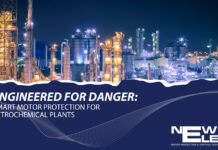A team of material scientists from Rice University (Houston, Texas, USA) published a study in the Cell Press journal Matter that examines why iron corrodes in contact with an “essentially inert” supercritical fluid of carbon dioxide (CO2). Supercritical fluids are materials at a temperature and pressure that keeps them roughly between phases, thereby rendering them “inert,” noncorrosive, and low-cost.
Through atom-level simulations, they formed the theory that irons itself plays a role in its own corrosion when exposed to supercritical CO2 (sCO2) and trace amounts of water by promoting the formation of reactive species in the fluid that come back to attack it. Their research led them to conclude that thin hydrophobic layers of 2D materials like graphene or hexagonal boron nitride could be employed as a barrier between iron atoms and the reactive elements of sCO2.
The authors of the study all come from Rice’s George R. Brown School of Engineering: materials theorist Boris Yakobson, who is the corresponding author of the study; graduate student Qin-Kun Li and research scientist Alex Kutana, both co-lead authors; and Rice assistant research professor and co-author Evgeni Penev.
“Eliminating corrosion is a constant challenge, and it’s on a lot of people’s minds right now as the government prepares to invest heavily in infrastructure,” says Yakobson, the Karl F. Hasselmann Professor of Materials Science and NanoEngineering and a Rice professor of chemistry. “Iron is a pillar of infrastructure from ancient times, but only now are we able to get an atomistic understanding of how it corrodes.”
As revealed through Rice laboratory simulations, there are other factors at play that contribute to iron corrosion in supercritical fluids.
“Water, as the primary impurity in sCO2, provides a hydrogen bond network to trigger interfacial reactions with CO2 and other impurities like nitrous oxide and to form corrosive acid detrimental to iron,” says Li.
The simulations also showed that the iron itself acts as a catalyst, lowering the reaction energy barriers at the interface between iron and sCO2, ultimately leading to the formation of a host of corrosive species: oxygen, hydroxide, carboxylic acid, and nitrous acid.
According to Rice researchers, their study demonstrates the ability of theoretical modeling to solve complicated chemistry problems—in this case, predicting thermodynamic reactions and estimates of corrosion rates at the interface between iron and sCO2—as well as indicate how a race of water in a superfluid can accelerate corrosion.















